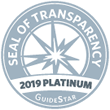
CLINICAL THYROIDOLOGY FOR THE PUBLIC
A publication of the American Thyroid Association
Summaries for the Public from Clinical Thyroidology (from recent articles in Clinical Thyroidology)
Table of Contents | PDF File for Saving and Printing
THYROID CANCER
A simple blood test can be helpful in the diagnosis of papillary thyroid cancer
ABBREVIATIONS & DEFINITIONS
Thyroid nodule: an abnormal growth of thyroid cells that forms a lump within the thyroid. While most thyroid nodules are non-cancerous (Benign), ~5% are cancerous.
Thyroid fine needle aspiration biopsy (FNAB): a simple procedure that is done in the doctor’s office to determine if a thyroid nodule is benign (non-cancerous) or cancer. The doctor uses a very thin needle to withdraw cells from the thyroid nodule. Patients usually return home or to work after the biopsy without any ill effects.
Genes: a molecular unit of heredity of a living organism. Living beings depend on genes, as they code for all proteins and RNA chains that have functions in a cell. Genes hold the information to build and maintain an organism’s cells and pass genetic traits to offspring
microRNA: a short RNA molecule that has specific actions within a cell to affect the expression of certain genes.
Molecular markers: genes and microRNAs that are expressed in benign or cancerous cells. Molecular markers can be used in thyroid biopsy specimens to either to diagnose cancer or to determine that the nodule is benign.
Papillary thyroid cancer: the most common type of thyroid cancer.
BACKGROUND
Thyroid nodules are very common, occurring in up to 50% of people. Most nodules are benign with only 5-10% of nodules being cancerous. Thyroid biopsy is the procedure of choice to identify patients who require surgery for a potential cancer, but it is not a perfect test. When the biopsy diagnosis is in question, some patients undergo for what is eventually found to be benign disease. Searching for alternative, confirmatory methods short of surgery remains a goal for diagnosis of thyroid nodules and thyroid cancers. Genetic changes and molecular markers of cancers and benign disease are of great interest. MicroRNA (miRNAs) are small bits of genetic material that leak out of cells and are found in the bloodstream. Thyroid cancer cells can release miRNAs and these miRNAs have been a focus of research to find a thyroid cancer marker in the bloodstream. In this study, serum miRNA testing was done to find determine if a diagnosis of thyroid cancer can be made or confirmed by simply drawing blood from a patient.
THE FULL ARTICLE TITLE:
Cantara S et al Circulating miRNA95 and miRNA190 are sensitive markers for the differential diagnosis of thyroid nodules in a Caucasian population. J Clin Endocrinol Metab 2014;99(11):4190-8. Epub July 24, 2014.
SUMMARY OF THE STUDY
Initially, 12 healthy individuals, 12 patients with nodular goiters and 12 patients with papillary thyroid cancer were studied by pooling the blood samples from each group and comparing the results found on a MicroRNA card with 384 markers. A total of 8 miRNA markers were found. These markers were then evaluated on each individual in the pool. A total of 4 of these 8 markers were confirmed to be significantly different in the papillary thyroid cancer patients when compared with nodular goiter and healthy individuals. These 4 miRNAs were then evaluated in a second group of patients (79 with papillary thyroid cancer, 80 with nodular goiter, 41 healthy individuals). Two of the miRNA markers (miRNA-95 and miRNA-190) were found to be highly correlated with thyroid cancer and 95% accurate in making a cancer diagnosis.
WHAT ARE THE IMPLICATIONS OF THIS STUDY?
This promising study identifies 2 miRNAs that may serve as a blood test to diagnose papillary thyroid cancer. Further studies in larger numbers of patients from different ethnic backgrounds will be necessary to confirm these findings and validate this study. The utility of serum markers for disease within the thyroid is an exciting future direction for thyroid nodule evaluation and treatment. This study suggests that someday a less invasive and more precise way to diagnose cancers may be available
—Julie Hallanger Johnson, MD
ATA THYROID BROCHURE LINKS
Thyroid cancer: http://www.thyroid.org/cancer-of-the-thyroid-gland
Thyroid Nodules: http://www.thyroid.org/what-are-thyroid-nodules


